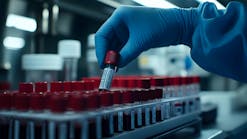AI transforms smartwatch ECG signals into a diagnostic tool for heart failure
A study published in Nature Medicine reports the ability of a smartwatch ECG to accurately detect heart failure in nonclinical environments. Researchers at Mayo Clinic applied artificial intelligence (AI) to Apple Watch ECG recordings to identify patients with a weak heart pump. Participants in the study recorded their smartwatch ECGs remotely whenever they wanted, from wherever they were. Periodically, they uploaded the ECGs to their electronic health records automatically and securely via a smartphone app developed by Mayo Clinic’s Center for Digital Health.
Mayo researchers interpreted Apple Watch single-lead ECGs by modifying an earlier algorithm developed for 12-lead ECGs that is proven to detect a weak heart pump. The 12-lead algorithm for low ventricular ejection fraction is licensed to Anumana Inc., an AI-driven health technology company, co-created by nference and Mayo Clinic.
While the data are early, the modified AI algorithm using single-lead ECG data had an area under the curve of 0.88 to detect a weak heart pump. By comparison, this measure of accuracy is as good as or slightly better than a medical treadmill diagnostic test.
All 2,454 study participants were Mayo Clinic patients from across the U.S. and 11 countries. They downloaded an app created by the Mayo Clinic Center for Digital Health to securely upload their Apple Watch ECGs to their electronic health records. Participants logged more than 125,000 previous and new Apple Watch ECGs to their electronic health records between August 2021 and February 2022. Clinicians had access to view all the ECG data on an AI dashboard built into the electronic health record, including the day and time it was recorded.
Approximately 420 participants had an echocardiogram ― a standard test using sound waves to produce images of the heart ― within 30 days of logging an Apple Watch ECG in the app. Of those, 16 patients had low ejection fraction confirmed by the echocardiogram, which provided a comparison for accuracy.





